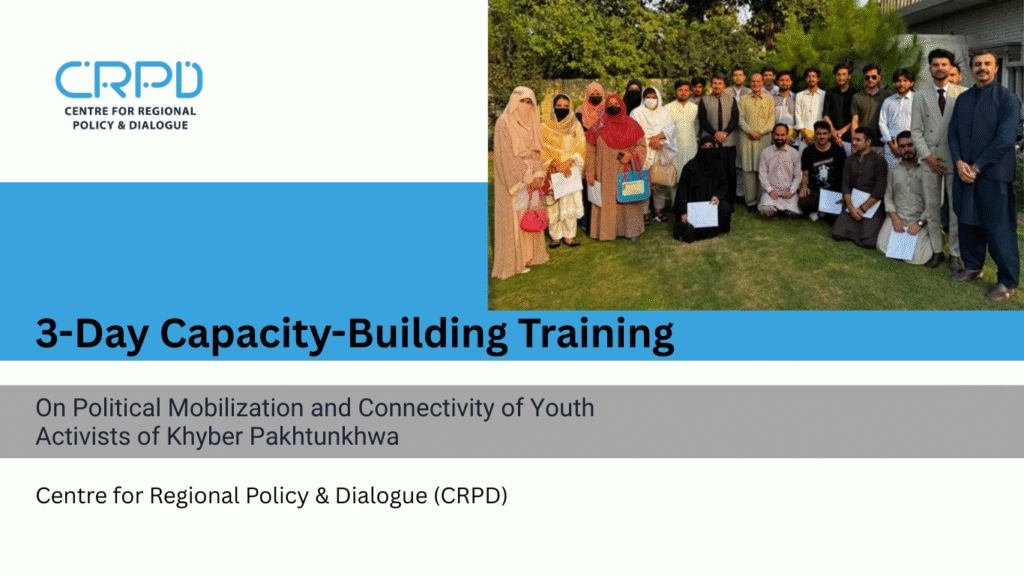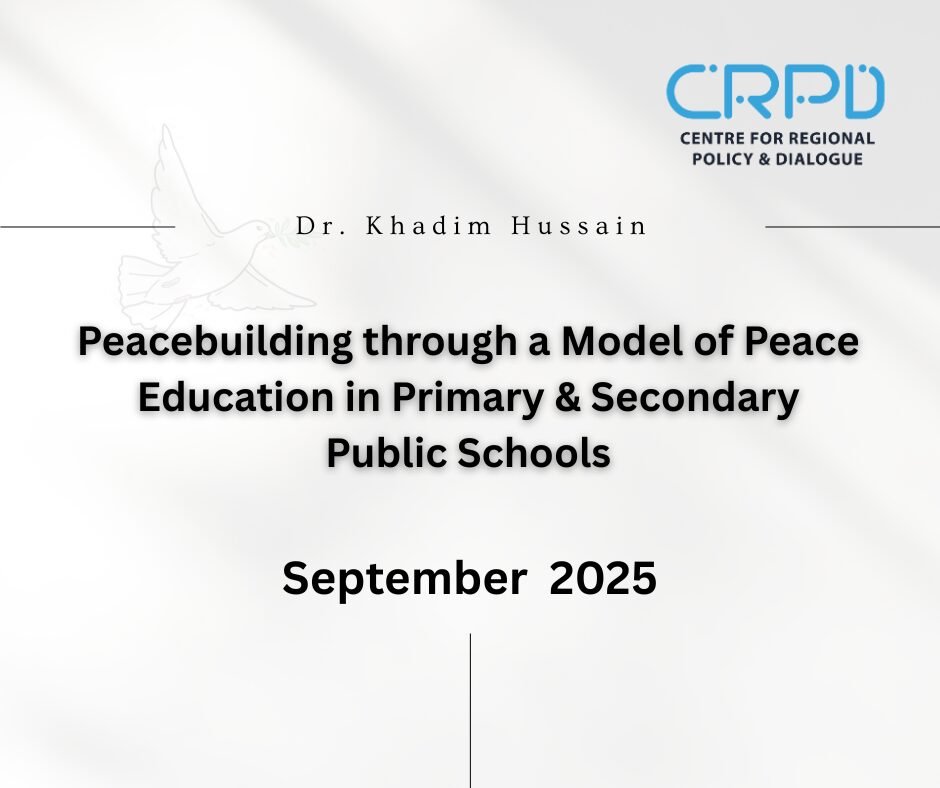By Mehran Wazir
The recent clash between Pakistan’s military and the Afghan Taliban, Emirat-e-Islami, on Durand Line has wide-ranging consequences for the borderland disrupting the lives of the locals and derailing the ongoing efforts towards peace, political engagement, and economic development. The conflict has not only caused immediate physical damage but has also permeated fear and uncertainty among the local population. This has negatively influenced their daily activities and sense of security. Moreover, the clash has likely encouraged local Taliban factions, Tehrik-e-Taliban Pakistan (TTP), Daesh, and other armed extremist groups to increase their activities and mobilization in the region. The increase in violent conflict poses a serious threat to the stability and progress of the borderland (land and people on both side of the Durand Line, with focus on Pakistani side). Diplomatic solutions and effective governance are required to manage the conflict and introduce sustainable development program on the borderland.
Borderlands are now acknowledged globally as distinct territories with unique dynamics as compared to a country’s mainland. Life in these regions differs from the one experienced in the mainland of a country. Social structures, communal bonds and political landscapes bring different experiences to people on borderland. The locals of the borderland have family members on both sides of the border and own property on both sides of the border. The dual ownership and citizenship can lead to complex legal and personal concerns. Besides, borderland residents are directly affected by cross-border conflicts experiencing physical damage, economic deprivation and displacement.
Economically, many borderland communities rely heavily dependent on cross-border trade which is often a vital part of their livelihoods. Residents of the borderlands also develop local retail markets to sustain their economy.
Unfortunately, in security states like Pakistan and Afghanistan, the borderland has often been deprived of the required diplomatic arrangement. Recognizing the distinctive feature of borderlands is crucial for governments to address the unique challenges and opportunities these regions face and present or else development and progress would remain an elusive idea.
When a country experiences persistent conflict along its borders, the people living in borderland face two main options: mass migration or survival at any cost. In the case of the region on both sides of the Durand Line and because of the ongoing violent conflict, both options are challenging.
For Pakistani side of the Durand Line, mass migration is not feasible as neighboring cities of the adjacent districts in Khyber Pakhtunkhwa are unable to accommodate large influx of people. The displacement which had taken place taken during different intervals since the first military operation in 2004 in South Waziristan has brought bad experiences for the host cities of Tank and Dera Ismail Khan and the communities over there. These two cities are not developed enough to accommodate the large number of internally displaced persons (IDPs). The community of Bannu had passed through the same experience when the IDPs of North Waziristan landed in the city after the military operation in 2014. Cities in Peshawar valley provided more supportive environment as compared to the mentioned cities. Similarly, Punjab, while offering better access to education, healthcare, jobs, and business opportunities, is not welcoming to migrants from the above-mentioned region.
The development of an indigenous economy is also hindered by various factors, including the presence of terrorist threats and the securitization of the area by the military. This has led to the closure of border crossing points for trade and daily wage workers, further exacerbating economic hardships. Furthermore, the security threats are hindering the development of local sources of economy including local markets, trade with other districts and retail. Agriculture and horticulture, natural resources including precious, semiprecious and building stones are indigenous sources of economy but unfortunately the local cannot utilize and capitalize due to many reasons; first, is due to the mentioned security threat and second, is the securitization in the area. The locals those who are trying to utilize the resources are receiving threats from the terrorist infrastructure present in form of Taliban, on the borderland. The Taliban demand for extortion money. On the other hand, due to securitization and military presence hurdled them from utilizing these resources.
The development of an indigenous economy in the border region (Pakistani side of the Durand Line) faces major challenges mainly due to the presence of Taliban threats and the securitization of the area by the Pakistani military. The whole security arrangements (securitization) are to stop Taliban activities inside the districts and to pre-empt attacks from across the Durand Line. Due to the above-mentioned factors, the crossing points often observed closure for both trade and passersby. The closure of crossing points has implications for trade and daily wage workers whose social and economic life become miserable.
Moreover, security threats have obstructed the development of local sources of economy, growth of local markets, trade with other districts and retail activities. Furthermore, the region has huge potential for agriculture, horticulture, and natural resources, such as precious and semiprecious stones which remain largely unexploited due to these challenges. The local population is unable to utilize these resources effectively due to the constant security threats and presence of security forces which restrict their access to and utilization of the indigenous resources.
Those who attempt to utilize these resources often face threats from terrorist groups like the local Taliban, TTP and Afghan Taliban who demand extortion money. Additionally, the securitization and military presence in the area further create hurdles for the locals to capitalize on these resources creating a cycle of economic inactivity and insecurity.
To address these challenges and promote development of an indigenous economy, comprehensive strategies are required to prioritize human development, economic development and empowering and facilitating local business community. The border crossing points (gates and routes on the Durand Line) must remain open permanently and if required the closure must be announced as per schedule. This could increase local businesses and markets and strengthen governance and community resilience.
The inadequate social service delivery by the Pakistani government in the region, particularly education and healthcare, has negative consequences for the local population. The lack of accessible and quality services compels inhabitants to travel to other districts – most of the time to the adjacent districts – or provinces like Punjab and Islamabad to seek basic healthcare and education resulting in inconvenience and expenses. This situation contributes to a sense of deprivation and exclusion among the people there. The local population further feels that their needs are not prioritized by the government leading to a sense of neglect and marginalization. These feelings of exclusion may have widened the gap between the people and the government. Moreover, the distrust towards the government may increase as people see that their basic needs are not being met. In extreme cases, this distrust can extend to the state structure itself, reducing the legitimacy of the state and its government in the eyes of the people. Addressing the inadequate social service delivery in these areas is crucial not only for improving the quality of life for the local population but also for fostering a sense of inclusion and trust in the government and state institutions.
Furthermore, the civilian local administration in the borderlands has been marginalized by the military leading to tensions such as the recent protests by police against the Frontier Corps in South Waziristan. The police claims that the Frontier Corps is illegally detaining police personnel and overriding the jurisdiction of the police in the area. The protest in South Waziristan continues with police closing police stations in protest. They have also refused to provide security for the upcoming polio campaign. Furthermore, civilian border management forces have engaged in physical clash with military and paramilitary forces in Torkham and Chaman border crossing points. These clashes between civilian and military institutions indicate that governance in the districts on Duran Line is messy.
The ongoing conflict between Afghan Taliban and Pakistani military has created an unstable situation in the borderland. The various Taliban factions including TTP, Afghan Taliban (Emirate-e-Islami), ISIS-K (Daesh) are posing threats to security of the bodrderlands. While Pakistan’s army has identified TTP and ISIS-K (Daesh) as the primary threats in the region, the recent engagement of Afghan Taliban along the border has added to the complexity of the situation. Emirate-e-Islami (Afghan Taliban) have already closed the crossing point at Angor Adda for all kinds of movement. The complete closure will increase the difficulties in the lives of the locals.
To address the challenges faced by the people living in the regions on Durand Line, political and civilian-led solution required to end the perpetual conflict and to create a more stable and sustainable future for the communities living on the both sides of the Durand Line.




